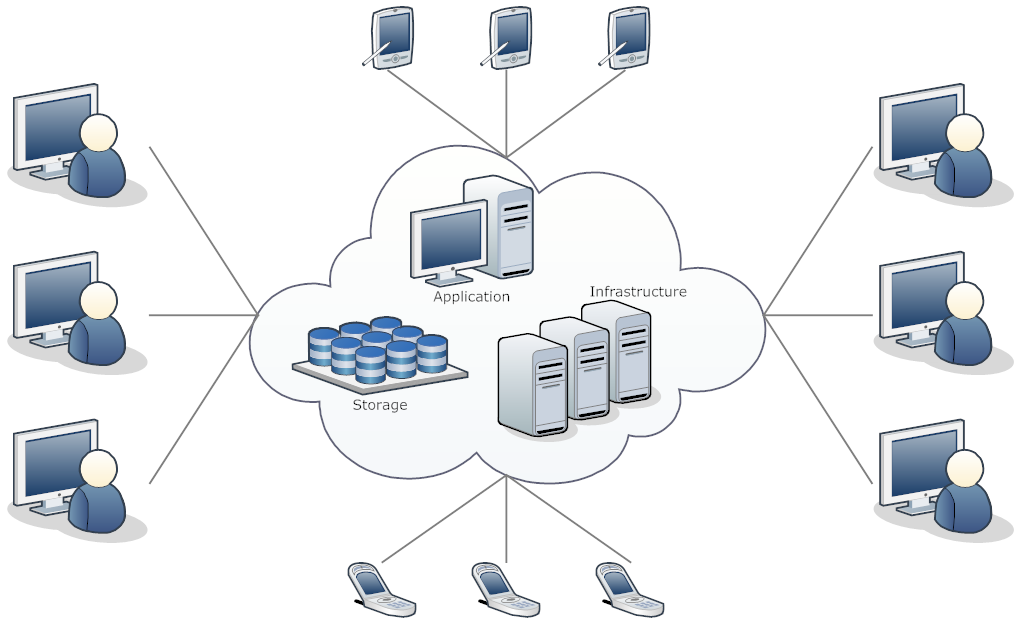The digital landscape is in constant flux, evolving at a dizzying pace. At the heart of this transformation lies cloud compute power, a paradigm shift that has redefined how businesses operate, innovate, and scale. Far from being a mere technological buzzword, cloud computing has become the backbone of modern enterprises, offering unprecedented flexibility, efficiency, and resilience. This comprehensive article delves into the multifaceted world of cloud compute power, exploring its evolution, key components, strategic advantages, and the profound impact it has on various industries, while also peering into its promising future.
What is Cloud Compute Power?
At its simplest, cloud compute power refers to the on-demand availability of computer system resources—including data storage, processing power, and networking—without direct active management by the user. Instead of relying on expensive, in-house hardware and infrastructure, businesses can access these resources over the internet from a cloud provider. This model fundamentally shifts capital expenditure (CapEx) to operational expenditure (OpEx), allowing organizations to pay only for what they use.
The foundation of cloud compute power rests on several key pillars:
A. Virtualization: This technology allows a single physical server to run multiple virtual machines (VMs), each acting as an independent computer. Virtualization optimizes hardware utilization, improves resource allocation, and enhances flexibility. It’s the critical enabler for sharing resources efficiently among multiple users.
B. Distributed Computing: Cloud environments leverage networks of interconnected computers working together to achieve a common goal. This distributed approach provides immense scalability and fault tolerance, ensuring that even if one component fails, the overall system remains operational.
C. On-Demand Self-Service: Users can provision computing resources—such as virtual machines, storage, and databases—without human intervention from the service provider. This agility empowers developers and operations teams to deploy and manage applications rapidly.
D. Broad Network Access: Cloud services are accessible from various client devices (laptops, mobile phones, tablets) over standard network mechanisms, typically the internet. This universal accessibility fosters collaboration and enables remote workforces.
E. Resource Pooling: Cloud providers pool computing resources to serve multiple consumers using a multi-tenant model. Different physical and virtual resources are dynamically assigned and reassigned according to consumer demand, creating a highly efficient resource utilization model.
F. Rapid Elasticity: Capabilities can be elastically provisioned and released to scale rapidly outward and inward commensurate with demand. This elasticity is crucial for handling fluctuating workloads, preventing over-provisioning during low demand and ensuring sufficient resources during peak periods.
G. Measured Service: Cloud systems automatically control and optimize resource use by leveraging a metering capability at some level of abstraction appropriate to the type of service (e.g., storage, processing, bandwidth). This transparency allows both users and providers to monitor usage and costs effectively.
The Evolution of Cloud Compute: A Journey of Innovation
The concept of cloud computing isn’t entirely new; its roots can be traced back to the mainframe computing era and the idea of “utility computing” in the 1960s. However, the modern manifestation of cloud compute power truly began to take shape in the early 2000s.
A. Early Days and Virtualization: The widespread adoption of virtualization technologies, particularly VMware, in the late 1990s and early 2000s laid the groundwork. This allowed businesses to consolidate servers, reduce hardware costs, and improve efficiency.
B. Amazon Web Services (AWS) Pioneer: In 2006, Amazon launched Amazon Web Services (AWS) with its Elastic Compute Cloud (EC2) and Simple Storage Service (S3). This marked a pivotal moment, making scalable, on-demand compute and storage accessible to anyone with an internet connection, effectively democratizing IT infrastructure.
C. The Rise of Public Cloud: Following AWS’s lead, other major players like Google Cloud Platform (GCP) and Microsoft Azure emerged, offering similar robust sets of services. This period saw the rapid growth of the public cloud model, where providers own and operate the infrastructure, and users access services over the internet.
D. Hybrid and Private Clouds: As organizations matured in their cloud adoption, many realized that a one-size-fits-all public cloud approach wasn’t always suitable. This led to the proliferation of hybrid cloud (a mix of on-premises, private cloud, and public cloud services) and private cloud (dedicated cloud infrastructure for a single organization). These models offer a balance of control, security, and scalability.
E. Serverless and Containerization: More recently, technologies like containerization (e.g., Docker, Kubernetes) and serverless computing (e.g., AWS Lambda, Azure Functions) have taken cloud compute power to the next level. Containerization packages applications and their dependencies into lightweight, portable units, ensuring consistent execution across environments. Serverless computing abstracts away the underlying infrastructure entirely, allowing developers to focus solely on writing code, with the cloud provider managing server provisioning and scaling.
Strategic Advantages: Why Cloud Compute Reigns Supreme
The widespread adoption of cloud compute power is not just a trend; it’s a strategic imperative driven by compelling advantages that resonate with businesses of all sizes.
A. Cost Efficiency: A. Reduced Capital Expenditure: Eliminates the need for large upfront investments in hardware, software licenses, and physical data centers. B. Pay-as-You-Go Model: Businesses only pay for the resources they consume, leading to predictable operational costs and eliminating wasted capacity. C. Lower Operational Costs: Reduces expenses related to power, cooling, physical security, and ongoing maintenance of on-premises infrastructure.
B. Scalability and Elasticity: A. Instant Scaling: Businesses can rapidly scale compute resources up or down based on fluctuating demand, ensuring optimal performance during peak loads and cost savings during off-peak times. B. Global Reach: Cloud providers have data centers worldwide, enabling businesses to deploy applications closer to their users, reducing latency, and expanding into new geographic markets with ease.
C. Enhanced Agility and Innovation: A. Faster Time to Market: Developers can provision infrastructure and deploy applications in minutes, accelerating product development cycles. B. Experimentation and Prototyping: The low cost of experimentation in the cloud encourages innovation, allowing teams to test new ideas without significant upfront investment. C. Access to Advanced Services: Cloud platforms offer a vast array of managed services, including AI/ML, big data analytics, IoT, and blockchain, enabling businesses to leverage cutting-edge technologies without building them from scratch.
D. Improved Reliability and Disaster Recovery: A. High Availability: Cloud providers design their infrastructure for high availability, with redundant systems and automatic failovers to minimize downtime. B. Robust Disaster Recovery: Built-in backup and recovery mechanisms, along with geographically dispersed data centers, ensure business continuity even in the face of catastrophic events. C. Managed Infrastructure: Cloud providers handle infrastructure maintenance, patching, and security updates, freeing up internal IT teams to focus on strategic initiatives.
E. Security and Compliance: A. Shared Responsibility Model: While users are responsible for securing their data in the cloud, cloud providers invest heavily in physical security, network security, and compliance certifications (e.g., ISO 27001, SOC 2, HIPAA). B. Advanced Security Tools: Cloud platforms offer a comprehensive suite of security tools, including identity and access management, encryption, network firewalls, and threat detection services.
Impact Across Industries: A Transformative Force
Cloud compute power is not confined to a single sector; its transformative impact is felt across virtually every industry, reshaping business models and driving innovation.
A. Healthcare: A. Telemedicine and Remote Patient Monitoring: Cloud enables secure storage and transmission of patient data for virtual consultations and continuous monitoring. B. Genomic Sequencing and Drug Discovery: Massive computational power is essential for processing vast datasets in genomics research and accelerating drug development. C. Electronic Health Records (EHR): Cloud platforms provide scalable and secure storage for EHRs, improving data accessibility and interoperability.
B. Financial Services: A. Algorithmic Trading: High-performance computing in the cloud supports complex trading algorithms that require immense processing speed. B. Fraud Detection: AI and machine learning models running on cloud infrastructure analyze vast transaction data to identify and prevent fraudulent activities. C. Regulatory Compliance: Cloud environments assist financial institutions in meeting stringent regulatory requirements through secure data storage and auditable logs.
C. Retail and E-commerce: A. Scalable E-commerce Platforms: Cloud elasticity handles sudden spikes in traffic during holiday sales or promotional events, ensuring seamless customer experiences. B. Personalized Customer Experiences: AI-driven recommendation engines powered by cloud compute analyze customer behavior to offer tailored product suggestions. C. Supply Chain Optimization: Cloud analytics provide insights into inventory management, logistics, and demand forecasting, leading to more efficient supply chains.
D. Media and Entertainment: A. Content Streaming and Delivery: Cloud infrastructure supports global content delivery networks (CDNs) for high-quality video and audio streaming. B. Video Rendering and Production: Cloud-based rendering farms provide the compute power needed for complex animation, visual effects, and film production, significantly reducing production times. C. Gaming: Cloud gaming platforms leverage massive compute resources to stream high-fidelity games to users without requiring powerful local hardware.
E. Manufacturing: A. IoT and Predictive Maintenance: Cloud platforms collect and analyze data from IoT sensors on manufacturing equipment, enabling predictive maintenance and reducing downtime. B. Digital Twins: Cloud compute power creates virtual replicas of physical assets, allowing for simulation, optimization, and remote monitoring of manufacturing processes. C. Smart Factories: Integration of AI, robotics, and cloud analytics to create highly automated and efficient manufacturing environments.
The Road Ahead: Future Trends in Cloud Compute Power
The evolution of cloud compute power is far from over. Several emerging trends are poised to shape its future, pushing the boundaries of what’s possible.
A. Edge Computing Integration: As more data is generated at the “edge” (e.g., IoT devices, smart factories), processing will increasingly occur closer to the data source rather than sending everything to a centralized cloud. This reduces latency, conserves bandwidth, and enhances real-time decision-making. The cloud will act as a centralized orchestrator and data aggregator for edge deployments.
B. Serverless Dominance: The abstraction offered by serverless computing will continue to grow, making it even easier for developers to build and deploy applications without managing any infrastructure. This will accelerate innovation and further reduce operational overheads.
C. AI and Machine Learning Specialization: Cloud providers will continue to offer highly optimized services for AI and ML workloads, including specialized hardware (e.g., GPUs, TPUs) and pre-trained models. This democratization of AI will enable more businesses to leverage artificial intelligence for competitive advantage.
D. Quantum Computing on the Horizon: While still in its nascent stages, quantum computing holds the promise of solving problems intractable for even the most powerful classical computers. Cloud providers are already offering access to quantum computing resources, making it accessible for research and development.
E. Sustainability and Green Cloud: With growing concerns about environmental impact, cloud providers are increasingly focusing on sustainable practices, including using renewable energy sources, optimizing data center efficiency, and implementing carbon-neutral operations. “Green cloud” will become a significant differentiator.
F. Cybersecurity Evolution: As cloud environments become more complex, cybersecurity will remain a paramount concern. Expect continuous innovation in threat detection, identity and access management, data encryption, and sovereign cloud solutions to meet evolving security challenges and regulatory demands.
G. Industry-Specific Clouds: Beyond general-purpose cloud platforms, there’s a growing trend towards specialized “industry clouds” tailored to the unique compliance, data sovereignty, and application needs of specific sectors like healthcare, finance, or government.
H. Multicloud and Cloud-Native Adoption: Organizations will increasingly adopt multicloud strategies, utilizing services from multiple cloud providers to avoid vendor lock-in, optimize costs, and enhance resilience. Simultaneously, a focus on “cloud-native” development principles (microservices, containers, DevOps) will ensure applications are built to fully leverage cloud benefits.
Navigating the Cloud Journey: Key Considerations
For organizations embarking on or expanding their cloud journey, several critical considerations are paramount to ensure success.
A. Strategy and Governance: Develop a clear cloud strategy aligned with business objectives. Establish robust governance frameworks for cost management, security, compliance, and resource allocation.
B. Security and Compliance: Implement a shared responsibility model, understanding what the cloud provider secures versus what your organization is responsible for. Invest in cloud-specific security tools and ensure compliance with relevant industry regulations.
C. Cost Management: Leverage cloud cost management tools and practices (e.g., rightsizing, reserved instances, spot instances) to optimize spending and avoid bill shock.
D. Skills and Talent: Invest in training and upskilling your IT teams to manage and optimize cloud environments. Cloud expertise is a critical differentiator.
E. Migration Strategy: For existing applications, develop a thoughtful migration strategy (e.g., rehost, refactor, re-platform, repurchase, retire, retain) that minimizes disruption and maximizes benefits.
F. Vendor Lock-in: While cloud providers offer compelling services, be mindful of potential vendor lock-in. Design architectures that allow for flexibility and portability where appropriate, possibly through multicloud or hybrid cloud approaches.
G. Data Management and Governance: Implement strong data governance policies, including data residency, backup, recovery, and lifecycle management, to ensure data integrity and compliance.
Conclusion
Cloud compute power has transitioned from a niche technology to an indispensable foundation of the modern digital economy. Its ability to deliver unparalleled scalability, flexibility, cost efficiency, and access to cutting-edge technologies has fundamentally reshaped how businesses operate and innovate. As we look to the future, the continuous evolution of edge computing, serverless architectures, specialized AI services, and sustainable practices will further solidify the cloud’s position as the driving force behind technological advancement. Embracing this evolution is not merely an option but a necessity for organizations striving for competitiveness, resilience, and sustained growth in an increasingly digital world. The next evolution of compute power is here, and it’s powered by the cloud.














